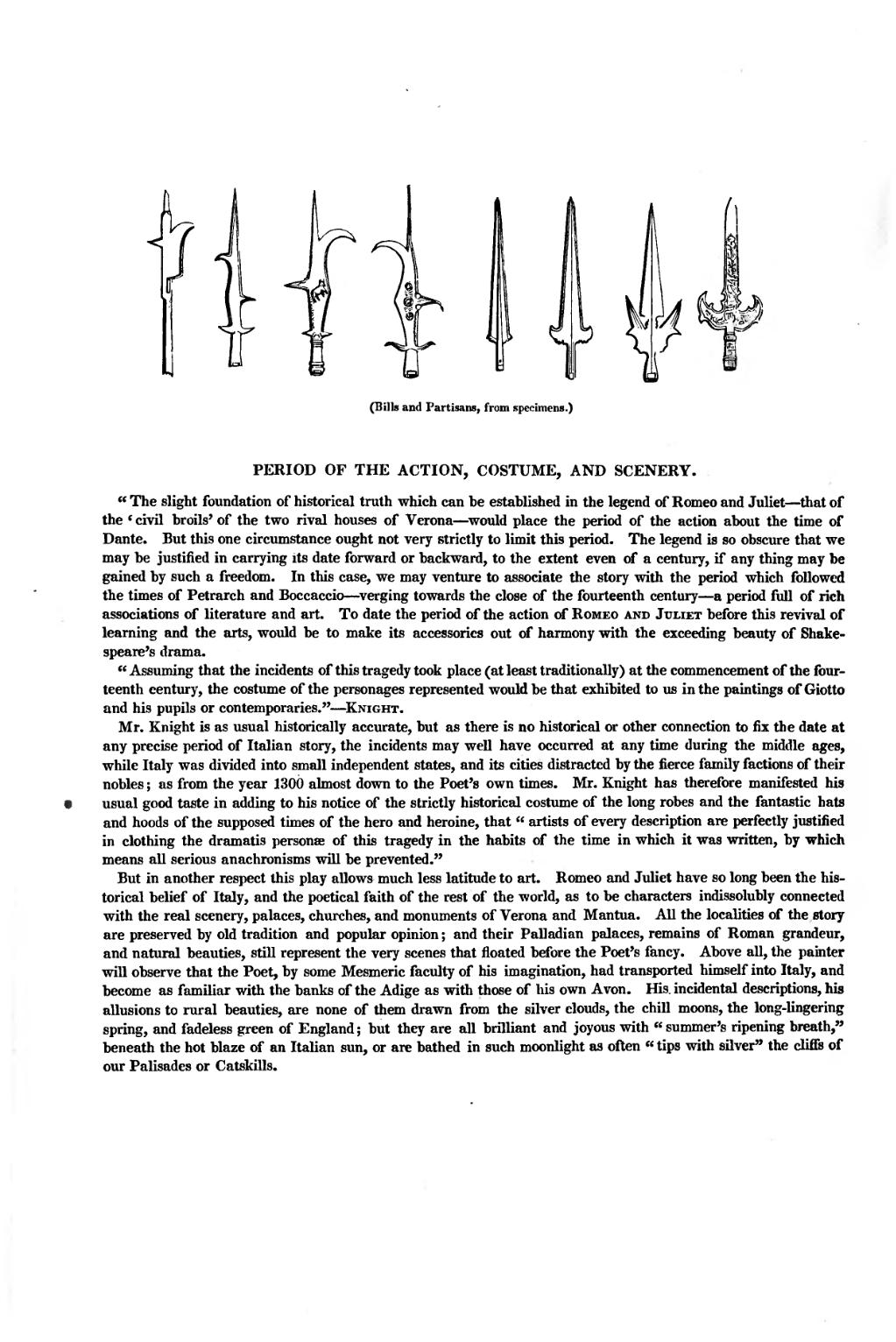An image should appear at this position in the text. To use the entire page scan as a placeholder, edit this page and replace "{{missing image}}" with "{{raw image|Romeo and Juliet (The Illustrated Shakespeare, 1847).djvu/9}}". Otherwise, if you are able to provide the image then please do so. For guidance, see Wikisource:Image guidelines and Help:Adding images. |
(Bills and Partisans, from specimens.)
PERIOD OF THE ACTION, COSTUME, AND SCENERY.
"The slight foundation of historical truth which can be established in the legend of Romeo and Juliet—that of the 'civil broils' of the two rival houses of Verona—would place the period of the action about the time of Dante. But this one circumstance ought not very strictly to limit this period. The legend is so obscure that we may be justified in carrying its date forward or backward, to the extent even of a century, if any thing may be gained by such a freedom. In this case, we may venture to associate the story with the period which followed the times of Petrarch and Boccaccio—verging towards the close of the fourteenth century—a period full of rich associations of literature and art. To date the period of the action of Romeo and Juliet before this revival of learning and the arts, would be to make its accessories out of harmony with the exceeding beauty of Shakespeare's drama.
"Assuming that the incidents of this tragedy took place (at least traditionally) at the commencement of the fourteenth century, the costume of the personages represented would be that exhibited to us in the paintings of Giotto and his pupils or contemporaries."—Knight
Mr. Knight is as usual historically accurate, but as there is no historical or other connection to fix the date at any precise period of Italian story, the incidents may well have occurred at any time during the middle ages, while Italy was divided into small independent states, and its cities distracted by the fierce family factions of their nobles; as from the year 1300 almost down to the Poet's own times. Mr. Knight has therefore manifested his usual good taste in adding to his notice of the strictly historical costume of the long robes and the fantastic hats and hoods of the supposed times of the hero and heroine, that "artists of every description are perfectly justified in clothing the dramatic personae of this tragedy in the habits of the time in which it was written, by which means all serious anachronisms will be prevented."
But in another respect this play allows much less latitude to art. Romeo and Juliet have so long been the historical belief of Italy, and the poetical faith of the rest of the world, as to be characters indissolubly connected with the real scenery, palaces, churches, and monuments of Verona and Mantua. All the localities of the story are preserved by old tradition and popular opinion; and their Palladian palaces, remains of Roman grandeur, and natural beauties, still represent the very scenes that floated before the Poet's fancy. Above all, the painter will observe that the Poet, by some Mesmeric faculty of his imagination, had transported himself into Italy, and become as familiar with the banks of the Adige as with those of his own Avon. His. incidental descriptions, his allusions to rural beauties, are none of them drawn from the silver clouds, the chill moons, the long-lingering spring, and fadeless green of England; but they are all brilliant and joyous with "summer's ripening breath," beneath the hot blaze of an Italian sun, or are bathed in such moonlight as often "tips with silver" the cliffs of our Palisades or Catskills.
